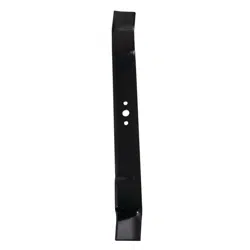Loading ...
Loading ...
Loading ...

TO OPEN THE DOOR MANUALLY
Trolley
Release Arm
(In Manual
Disconnect
Position)
Emergency
Release Handle
(Down and Back)
Trolley
Lockout position
(Manual disconnect)
To reconnect
Trolley
Release
Arm
Trolley
DISCONNECT THE TROLLEY
1. The door should be fully closed if
possible.
2. Pull down on the emergency release
handle so the trolley release arm snaps to
the vertical position. The door can now be
raised and lowered as often as necessary.
TO RE-CONNECT THE TROLLEY
1. Pull the emergency release handle toward
the garage door opener so the trolley
release arm snaps to the horizontal
position. The trolley will reconnect on the
next UP or DOWN operation, either
manually or by using the door control or
remote control.
To prevent possible SERIOUS INJURY or DEATH from a falling garage door:
l If possible, use emergency release handle to disengage trolley ONLY when
garage door is CLOSED. Weak or broken springs or unbalanced door could
result in an open door falling rapidly and/or unexpectedly.
l NEVER use emergency release handle unless garage doorway is clear of
persons and obstructions.
l NEVER use handle to pull door open or closed. If rope knot becomes untied,
you could fall.
THE REMOTE CONTROL BATTERY
To prevent possible SERIOUS INJURY or DEATH:
l NEVER allow small children near batteries.
l If battery is swallowed, immediately notify doctor.
To reduce risk of fire, explosion or chemical burn:
l Replace ONLY with 3V CR2032 coin batteries.
l DO NOT recharge, disassemble, heat above 212°F (100°C) or incinerate.
1
2
3
Pry open the case first in the
middle (1), then at each side
(2 and 3) with the visor clip.
The Lithium battery should produce power for up
to 3 years.
To replace battery, use the visor clip or
screwdriver blade to pry open the case as shown.
Insert battery positive side up (+).
Replace the battery with only 3V CR2032 coin cell
batteries. Dispose of old battery properly.
CARE OF YOUR OPENER
MAINTENANCE SCHEDULE
Every month
l Manually operate door. If it is unbalanced or binding, call a trained door
systems technician.
l Check to be sure door opens and closes fully. Adjust if necessary, see page28.
l Test the safety reversal system. Adjust if necessary, see page30.
Twice a year
l Check chain tension. Disconnect trolley first. Adjust if necessary, see page
11.
Every year
l Oil door rollers, bearings and hinges. The garage door opener does not
require additional lubrication. Do not grease the door tracks.
NOTICE: This device complies with Part 15 of the FCC rules and Industry Canada’s license-exempt RSSs. Operation is
subject to the following two conditions: (1) this device may not cause harmful interference, and (2) this device must
accept any interference received, including interference that may cause undesired operation.
Any changes or modifications not expressly approved by the party responsible for compliance could void the user’s
authority to operate the equipment.
This device must be installed to ensure a minimum 20 cm (8 in.) distance is maintained between users/bystanders and
device.
This device has been tested and found to comply with the limits for a Class B digital device, pursuant to part 15 of the
FCC rules and Industry Canada ICES standard. These limits are designed to provide reasonable protection against
harmful interference in a residential installation. This equipment generates, uses and can radiate radio frequency
energy and, if not installed and used in accordance with the instructions, may cause harmful interference to radio
communications. However, there is no guarantee that interference will not occur in a particular installation. If this
equipment does cause harmful interference to radio or television reception, which can be determined by turning the
equipment off and on, the user is encouraged to try to correct the interference by one or more of the following measures:
l Reorient or relocate the receiving antenna.
l Increase the separation between the equipment and receiver.
l Connect the equipment into an outlet on a circuit different from that to which the receiver is connected.
l Consult the dealer or an experienced radio/TV technician for help.
34
Loading ...
Loading ...
Loading ...
